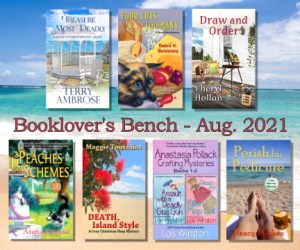Before you upload your book to the various distributor sites, you must prepare your book description in long and short forms, any review quotes you’ve obtained, keywords and categories, and your author biography. You’ll also need your ISBNs, subtitle, series title and volume number.
If you’re going wide, choose if you want to submit your ebook directly to Amazon, Kobo, Apple, Barnes and Noble, and Google Play, or if you want to go through a third-party aggregator such as Draft2Digital for some of these. Definitely upload to Amazon directly. You’ll still want to submit to D2D for all the other sites it covers, including library sales through Hoopla and Overdrive.
Exclusive or Non-Exclusive
Decide if you want your book in Kobo Plus, which is a subscription program like Kindle Unlimited but without exclusivity. And will you go exclusive on Amazon in their Kindle Unlimited program? Be careful when you upload to make the right choice. This also applies to your print book. Do not select Expanded Distribution at Amazon if you plan to also upload your print edition to IngramSpark.
You can save your books at each site as a draft without publishing yet, or you can submit for preorder. Make sure your details are consistent at each site. You’ll also have the opportunity to review digital proof copies.
Metadata
At each site, you’ll be asked for the book title, subtitle, series, and volume number. In most cases, you’ll upload the ebook cover and the ePub file. Then you may be asked to choose the categories and keywords, add an author bio and review quotes, set the price and publication date. You’ll also be asked for your ISBN numbers. I suggest you buy your own so you are listed as the publisher. ISBNs are also required at IngramSpark and to enter certain published author contests. Read more about this choice HERE.
At this point, you can submit for preorder or hit the save button and exit. This allows you to come back later to hit the Publish icon. This is helpful if you don’t have all of your information ready or if you’ll be submitting a revised book file. Or you may have to wait until you’re within the parameters of preorder dates, like for print books at Amazon KDP.
Launching Your Book
Once your book is ready and a pub date is set, you can prepare for your book launch. For my upcoming September book release, I’ve already scheduled a cover reveal, a virtual blog tour, and an online launch party. I’ll publish my ebook in June for preorders. This will allow me to collect the buy links for my scheduled cover reveal.
Then I will start soliciting advance reviews, if not before. I’ll do a preorder alert on BookBub and put my book into NetGalley through an author co-op. Meanwhile, I’m writing all the guest posts for my blog tour and for my Facebook launch party. You can also draft newsletters and blog posts ahead of time for your preorder and your book release dates. And don’t forget to create memes to promote your book on social media.
Go here for a more detailed launch countdown – https://nancyjcohen.com/preparing-for-a-book-launch/
Free Workshop
You can also sign up for this free workshop where I’ll be doing a Power Point presentation with much more how-to advice and examples:
Saturday, June 21 at 2:00 – 3:00 pm EDT, “Self-Publishing Made Simple: Your Roadmap to Success” with Nancy J. Cohen via Zoom sponsored by Alvin Sherman Library at Nova Southeastern University – https://nova.libcal.com/event/14245503
View my previous posts:
Finalizing Your Manuscript
Choosing an eBook Distributor
Choosing a Print Distributor




























